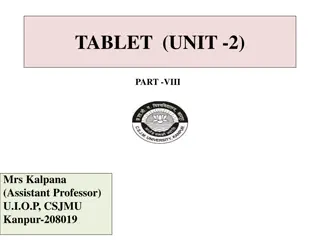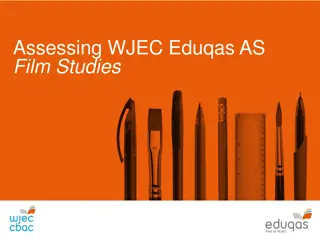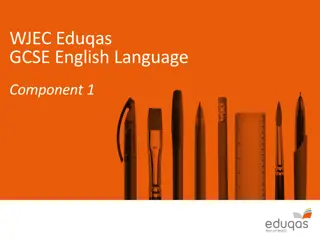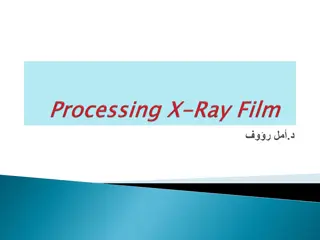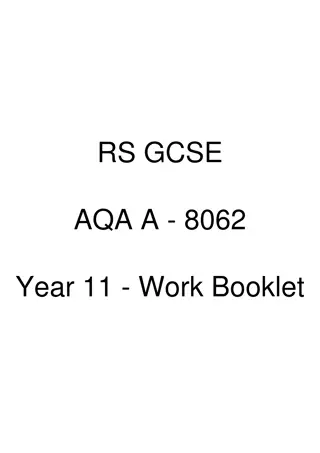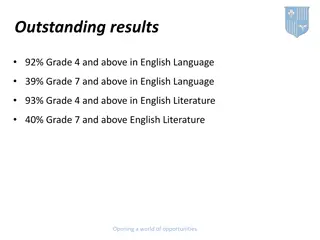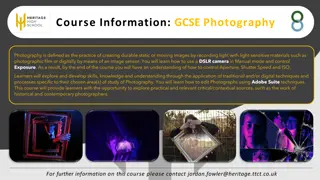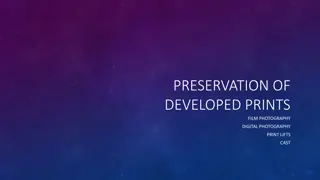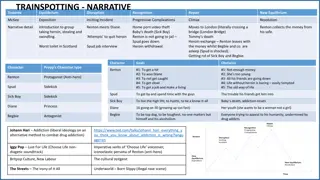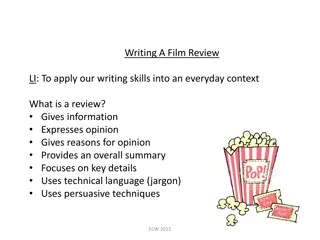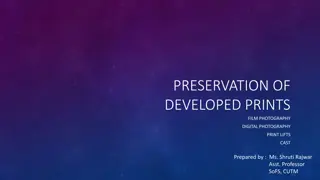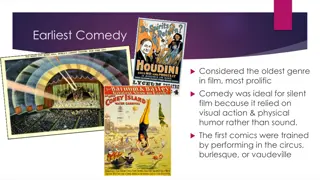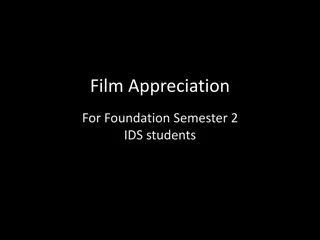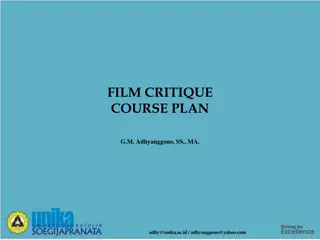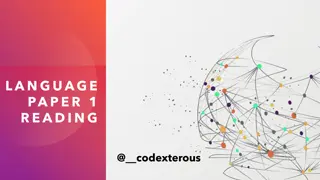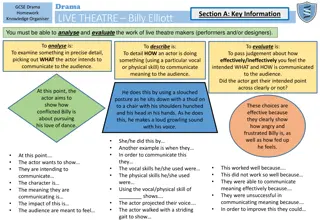Effective Assessment Practices in GCSE Film Studies
Ensuring objectivity in assessing students' responses is crucial during marking and standardization processes in GCSE Film Studies. Training on objectivity, understanding assessment criteria, and exercising academic judgment through response mark schemes are key components in fair evaluation. Validating alternative responses, awarding marks precisely, and recognizing the importance of subject terminology contribute to accurate assessment outcomes.
Download Presentation

Please find below an Image/Link to download the presentation.
The content on the website is provided AS IS for your information and personal use only. It may not be sold, licensed, or shared on other websites without obtaining consent from the author. Download presentation by click this link. If you encounter any issues during the download, it is possible that the publisher has removed the file from their server.
E N D
Presentation Transcript
Assessing WJEC Eduqas GCSE Film Studies
Assessing evidence It is important to ensure objectivity in assessing students responses, both at the initial marking stage and during internal standardisation. Do not allow personal knowledge of individual students to affect assessment decisions: ensure that you mark the student responses in front of you rather than the students behind them. JCQ has provided training on ensuring objectivity when assessing students evidence. You should also consider the purpose of the assessment, particularly if you are selecting evidence which has been completed earlier in the course. Formative assessment, conducted during the course of the learning in order to gauge student understanding, may not always provide appropriate evidence, as the student may not have fully developed their understanding of all concepts to the best of their ability at this point in time. Summative assessment, either at the end of the course or the end of a component, may provide a more realistic picture of the students attainment levels.
Assessing evidence Understanding the assessment criteria Assessment criteria generally take two forms: objective marking generally for low tariff responses, where knowledge of objective information is being assessed the exercising of academic judgement via indicative content, that is, an indication of the kind of content responses may include.
Assessing evidence Understanding the assessment criteria objective marking For questions assessing objective knowledge, the assessment criteria should be applied precisely. Marks should be awarded as indicated and no further subdivision made. Where the assessment criteria list points which may be included in students' answers, the list is not exhaustive and teachers should credit valid alternative responses which are not listed. In general, credit should be given according to the accuracy and relevance of students answers.
Assessing evidence Understanding the assessment criteria exercising academic judgement through levels of response mark schemes Firstly, identify the appropriate band a student s response falls into according to the criteria. Award a band where the student s response covers the majority of the criteria. Secondly, consider a mark in the centre of the band and then increase or decrease the mark depending on the quality of the answer, which may be reflected in the amount of indicative content covered. If a response falls between two bands, consider whether there are more characteristics of the higher or lower of the two bands and award accordingly. Indicative content is not exhaustive and other valid responses may be credited. Use of appropriate subject terminology is rewarded within the marking criteria.
Assessing evidence Rubric infringements Nature of Infringement Guidance Not answering the focus of the question set Mark on merit and award appropriate band. Depending on the severity of the lack of focus it may be Band 2 'Basic' or even Band 1 'Limited'. Escalate to Team Leader if unsure. Zero marks awarded. Inappropriate film -Answering using texts that are not set by the WJEC specification or from other parts of the specification. Answering on one film in the comparative film study Unbalanced response (refers to one film over another film in Component 1, Question 3 Divide mark by two. Mark within the appropriate band for example, if there is Excellent/Band 5 understanding of one film and Basic/Band 2 of the other then a top Band 3 or lower Band 4 may be the best fit approach. If you are unsure wether the reference to the second film is worthy of credit, escalate to Team Leader.
Assessing evidence Rubric infringements Nature of Infringement Guidance No sequence referenced or identified in a sequence question Award up to Top Band 3 depending on the understanding demonstrated by the response. One sequence referred to in a comparison sequence question Award up to Top Band 4 depending on the understanding demonstrated by the response. Confused context i.e. talks about 'production' in a 'social' context question There are some overlaps of contexts. Mark on merit and put in correct band according to the knowledge and understanding demonstrated. Uses two films from same group Divide mark by two. No comparison in Component 1, Section 3 No marks awarded for A02 Makes no reference to Specialist Writing in Component 1, Question 5 Award up to Top Band 2 depending on the understanding demonstrated by the response
Assessing evidence Assessment Purpose GCSE Film Studies aims to develop learners knowledge and understanding of: The ways in which meanings and responses are generated through film A contrasting, diverse range of films from different national contexts How films reflect social, cultural and political contexts Film as an aesthetic medium The relationship between film and technology over time Component 1 develops learners understanding of US Film through the study of three American films from different historical periods.
Assessing evidence Assessment Objectives Component 1 Within examined assessments for GCSE Film, candidates are expected to: AO1: Demonstrate knowledge & understanding of elements of film AO2: Apply knowledge and understanding of elements of film to analyse and compare films
Assessing evidence Section A: US film comparative study Section B: Key developments in film technology Section C: US independent film Questions in all sections are stepped question in either three or four parts. The focus of Section A is narrative, genre & context. The focus of Section B is film technology. The focus of Section C is the specialist writing. Section A assesses AO1 & AO2 Section B assesses AO1 Section C assesses AO1 & AO2
Assessing evidence Understanding the Assessment Bands: The mark scheme is divided into 5 bands which can be understood as - Band 5/EXCELLENT: Excellent MEANS detailed film analysis, concise & focused answers question, confident use of terminology, consistent display of knowledge and understanding of elements of film Band 4/GOOD: Good MEANS reasonably detailed analysis, focused on question, good use of terminology, displays regular knowledge and understanding of elements of film Band 3/SATISFACTORY: Satisfactory MEANS some key points of analysis, focuses on question, some use of terminology, knowledge and understanding of elements of film is evident Band 2/BASIC: Basic MEANS vague or descriptive points of analysis with some relevance to question, knowledge and understanding is straightforward or common-sense Band 1/MINIMAL: Minimal MEANS little analysis, little or no knowledge and understanding, short, incomplete or barely attempted
Assessing evidence: Section A General characteristics of a successful response: Clear grasp of the key elements of film form in both correct application and use of the relevant terminology. Ability to reference relevant details (i.e. camera shot), sequences and examples from the film studied. Acts on the concept tested by the question to produce a well structured, relevant and focused response. The length of a candidate s response is not indicative of its quality. Band 5 responses are clearly focused on the task and can be concisely written. See OER 2019 Section A, Q1a,b,c Example 1
Assessing evidence: Section A General characteristics of a less successful response: Key elements of film form are poorly or barely applied and use of the relevant terminology is infrequent. Failure to reference relevant details (i.e. camera shot), sequences and examples from the film studied. Where present there is a tendency to describe these elements rather than apply them in their response to the question. Lacks focus on the question to produce a relevant response. See OER 2019 Section A, Q1a,b,c Example 3
Assessing evidence: Section A Characteristics of a successful comparative study: A clear discussion of the similarities and differences between the films studied Uses detailed points from each film to make a points of explicit comparison Characteristics of a less successful comparative study: Discusses each film in isolation without any comparison Comparison between films is vague. May talk about one film, then the other, without making explicit links between the two A tendency to rely on the recall of facts and description rather than applying this knowledge to a comparison
Assessing evidence: Section C Characteristics of a US independent film successful response: Clear grasp of the key elements of film form in both correct application and use of the relevant terminology. Ability to reference relevant details, sequences and examples from the film studied to support arguments. Responds to the ideas, arguments and concepts being put forward by the chosen specialist film writing. Produce a well-structured, well-argued response. Demonstrates an emerging critical voice in discussing the specialist film writing. See OER 2019 Section C, Q5, Example 1
Assessing evidence: Section C Characteristics of a less successful a US independent film response: Minimal reference relevant detail, sequences and examples from the chosen film to support arguments. Basic engagement with the specialist film writing A tendency to describe both film and specialist film writing rather than applying this knowledge to the question. Limited critical discussion of the specialist film writing in the light of the question. Incoherent structure shows basic ability to construct an answer or argument. Lacks an individual reaction to the specialist film writing beyond recall of its content. See OER 2019 Section C, Q5, Example 3
Assessing evidence Potential problem areas / what not to reward There may be issues with the interpretation of the word identify in 1 & 2 a). Problems here would be a lack of clear identification. For example if asked to identify costume a dress is not specific to the film or character and cannot be credited. The answer must be a clear example from the film studied. Assessors are advised to consider what kind of response would we expect from a candidate at GCSE level in the time available. It is sometimes useful to take a step back from the detail of the mark scheme and consider the answer in the general terms such as excellent , good , satisfactory and so on. In Section C: US independent film problems can arise when candidates make little or no reference to the specialist film writing. In these cases marks can only be awarded in the limited level of response, if at all.
Assessing evidence Assessment Purpose GCSE Film Studies aims to develop learners knowledge and understanding of: The ways in which meanings and responses are generated through film A contrasting, diverse range of films from different national contexts How films reflect social, cultural and political contexts Film as an aesthetic medium The relationship between film and technology over time Component 2 develops learners understanding of three further specialist study areas: narrative, representation and aesthetics.
Assessing evidence Assessment Objectives Component 2 Within examined assessments for GCSE Film, candidates are expected to: AO1: Demonstrate knowledge & understanding of elements of film AO2: Apply knowledge and understanding of elements of film to analyse film
Assessing evidence Section A: Global English language film (produced outside the US) Section B: Global non-English language film Section C: Contemporary UK film (produced after 2010) Questions in all sections are stepped question in either three or four parts. The focus of Section A is narrative. The focus of Section B is representation. The focus of Section C is aesthetics. Part (a) of the question assesses AO1 Part (b) of the question assesses AO1 Part (c) of the question, when set, assesses AO2 The final part assesses AO1 and AO2 in an extended writing response.
Assessing evidence Assessing higher tariff questions These questions are assessed for both AO1 (maximum of 5 marks) and AO2 (maximum of 10 marks) equalling 15 marks in total. Often, this question asks candidates to refer to a specific sequence or scene from the film studied. The mark scheme is divided into 5 bands which use the following descriptors to support your assessment: Band 5 Excellent Band 4 Good Band 3 Satisfactory Band 2 Basic Band 1 - Limited
Assessing evidence Understanding the Assessment Bands: Band 5: Excellent MEANS detailed film analysis, concise & focused answers question, confident use of terminology, consistent display of knowledge and understanding of elements of film Band 4: Good MEANS reasonably detailed analysis, focused on question, good use of terminology, displays regular knowledge and understanding of elements of film Band 3: Satisfactory MEANS some key points of analysis, focuses on question, some use of terminology, knowledge and understanding of elements of film is evident Band 2: Basic MEANS vague or descriptive points of analysis with some relevance to question, knowledge and understanding is straightforward or common-sense Band 1: Minimal MEANS little analysis, little or no knowledge and understanding, short, incomplete or barely attempted
Assessing evidence Characteristics of a successful higher tariff response: Demonstrates an excellent understanding of elements of film which will be supported by effective and accurate use of subject specific terminology Sustained and focused on the requirements of the question Provides thorough sequence analysis which will use specific detail from the film studied Analytical points will be confidently linked to an understanding of the specialist concept being tested (i.e. narrative/representation/aesthetics). May engages in wider debates on concept being tested The length of a candidate s response is not indicative of its quality. Band 5 responses are clearly focused on the task and can be concisely written. See OER 2019, Section C, Example 1, Q3d Attack the Block
Assessing evidence Characteristics of a less successful higher tariff response: Band 3 responsesdemonstrate a satisfactory understanding of elements of film. Some film terminology is likely to be deployed in a Band 3 response, though the response may be more descriptive than analytical. Candidates may offer a reasonable perspective and will demonstrate some appreciation of the concept being tested (i.e. narrative/representation/aesthetics) Band 3 responses may lack focus and stray from the requirements of the question See OER 2019, Section 3, Example 3, Q3d Attack the Block Band 1 responses will be brief or incomplete and demonstrate a limited understanding of elements of film. There will be a lack of, or minimal use of, film terminology Film analysis will be unconvincing or wholly descriptive Often, Band 1 responses lack focus on the task at hand and may deviate from the specifics of the question. May makes sweeping generalisations
Assessing evidence Assessing lower tariff questions - parts (a), (b) and (c) Low tariff questions for one or two marks can be deemed correct or incorrect. As with all aspects of the course, the mark scheme should be applied positively to low tariff questions. Strong candidates will provide focused answers that clearly address the specifics of the question. Responses to low tariff questions can be short and concise and do not need long descriptions or to be supported by detailed evidence to gain maximum marks. Differentiation between marks for these questions is outlined in the specific mark scheme. Band 5 example: See OER 2019, Section C, Example 1
Assessing evidence Potential issues when assessing Component 2 For lower tariff questions, assessors should avoid looking for an exact response from candidates. If candidates are asked to identify a character or setting, for example, be open-minded within reason. Candidates often surprise us with their answers and should not be penalised for doing so. The final sub-question in Section A often asks candidates to focus on a specific moment in their chosen film (the opening or the end, for instance). Where candidates fail to adhere to the parameters of the question, it is reasonable to cap their response at Band 3. When assessing the final sub-question, refer closely to the mark scheme to inform the allocation of marks. For example, it is entirely possible that a candidate may be awarded a mark in Band 4 for AO1 and Band 3 for AO2 depending on the strengths and relative weaknesses of their response. Occasionally, candidates answer questions using films from other sections of the course. This would be considered a rubric error and assessed as such.
Any Questions? If you have any questions, contact our specialist subject officers and administrative support team for your subject with any queries. film@eduqas.co.uk




